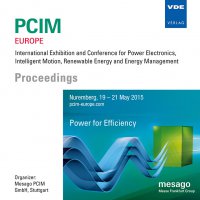Thick Printed Copper as Highly Reliable Substrate Technology for Power Electronics
Conference: PCIM Europe 2015 - International Exhibition and Conference for Power Electronics, Intelligent Motion, Renewable Energy and Energy Management
05/19/2015 - 05/20/2015 at Nürnberg, Deutschland
Proceedings: PCIM Europe 2015
Pages: 6Language: englishTyp: PDF
Personal VDE Members are entitled to a 10% discount on this title
Authors:
Gundel, Paul; Bawohl, Melanie; Challingsworth, Mark; Choisi, Michael; Garcia, Virginia; Gaul, Matthias; Kersken, Knuth; Modes, Christina; Nikolaidis, Ilias; Persons, Ryan; Reitz, Jessica; Shahbazi, Caitlin (Heraeus Deutschland GmbH & Co. KG, Heraeusstr. 12-14, 63450 Hanau, Germany)
Abstract:
Up to now Direct Bonded Copper (DBC) is the standard substrate technology for most power electronics applications. This paper presents Thick Printed Copper (TPC) as an alternative technology for applications with highest reliability requirements in power electronics and high brightness LEDs with a high freedom in design. The drawbacks of DBC are the relatively low reliability under thermo-mechanical stress, a low spatial resolution and a low freedom of design in regards of layer thickness. The outstanding high reliability of Thick Printed Copper is demonstrated in this paper by passive thermal shock tests in direct comparison to DBC. In the second part, the high spatial resolution possible with copper paste technology is described. Furthermore, the work shows that TPC can be applied to a wide range of relevant ceramic substrate materials including alumina, aluminum nitride and zirconia toughened alumina. Finally, a detailed review is given discussing the different copper layer to substrate bonding mechanisms, which prevent void formation and are responsible for the excellent thermo-mechanical reliability.


